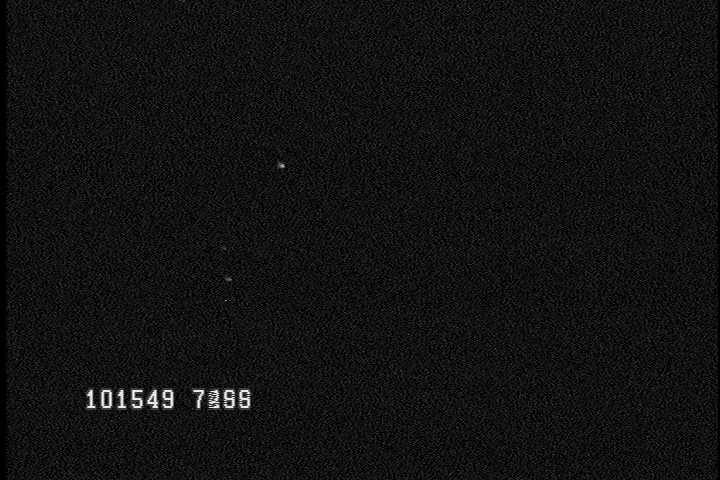
 Copyright © Michael Richmond.
This work is licensed under a Creative Commons License.
Copyright © Michael Richmond.
This work is licensed under a Creative Commons License.
Table of contents:
David Dunham performed quite a feat, recording this event from three locations: his home in Greenbelt, MD (with help from his wife), an untended station in La Plata, MD, and a station in Dahlgren, VA. You can read his report on the event at
Some time after the event, he kindly made digitized versions of the videotapes available. Two of them -- the Greenbelt and La Plata records -- have timestamps on each frame. The Dahlgren video has no timestamps (in the version I examined).
First, I broke each video clip into individual frames, using TMPGEnc for the La Plata and Dahlgren tapes, and MPlayer for the Greenbelt tape. The result was a set of JPEG images, each 720 x 480 pixels in size.
Below are sample frames, with index numbers 1 and 2, from each recording. One might use these to determine the time of any frame in the two videos with timestamps. In each frame, the brightest object is the "reference star", with the target star below it and slightly to the left.
First, the Greenbelt frames, indices 1 and 2:

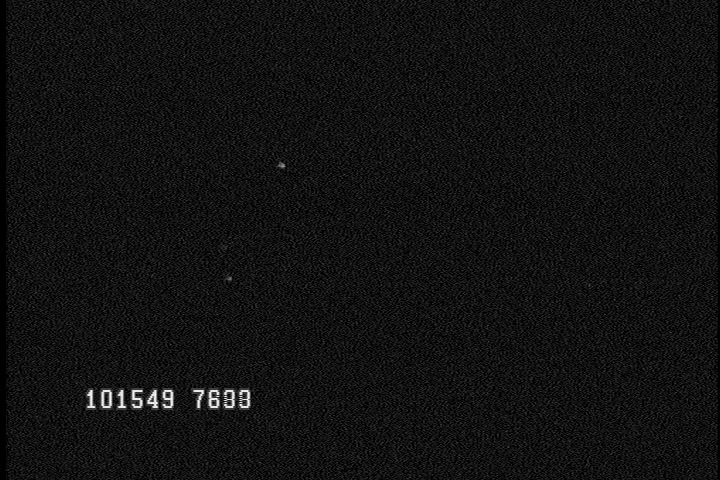
Next, the La Plata frames, indices 1 and 2:
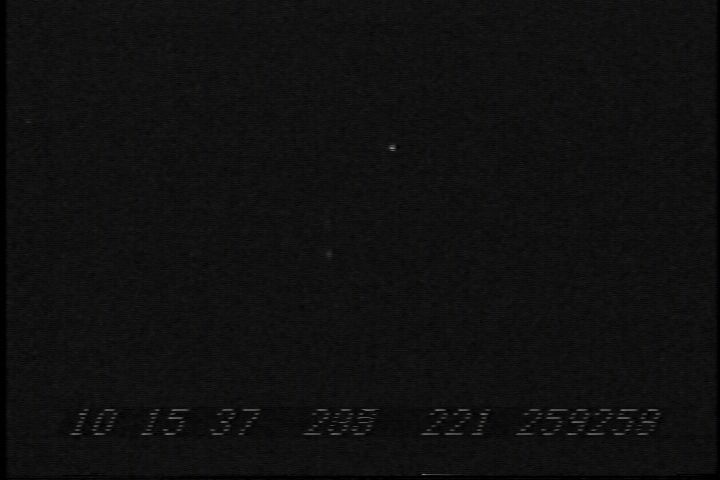
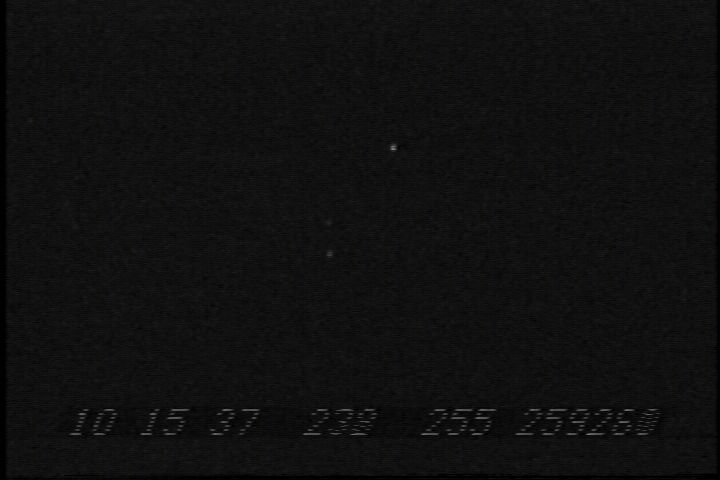
Finally, the Dahlgren frames, indices 1 and 2:

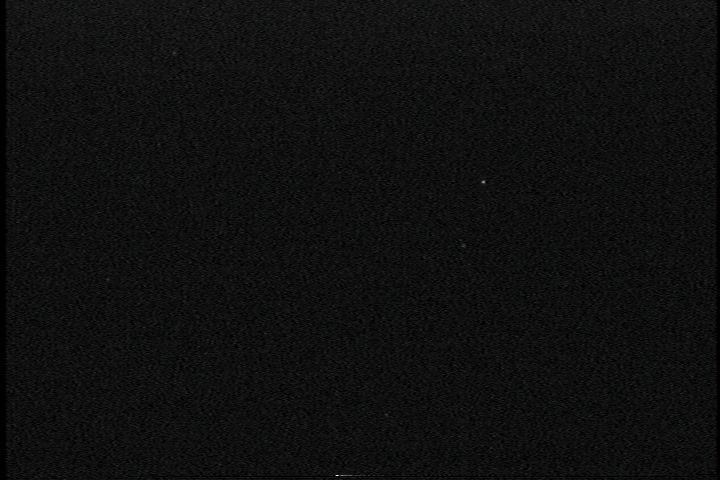
In order to process the data, I
There were three stars visible in each video. Two of them were the same in each case, one of which was the target star HD 37767 = SAO 58354 = HIP 26902. According to SIMBAD, this star is of spectroscopic type B3V, with a parallax measured by Hipparcos which is too small to provide any reliable distance. Note that this star is one of those chosen to serve as a template in a library of stellar spectra:
There is no indication in the literature of duplicity.
A slightly brighter star nearby also appeared in all three video records. In the analysis below, it is called "the reference star". A much fainter star was also visible, but, due to the different fields of view, not the same star in each case. I refer to the third, faint object visible in the videos as "the check star". It serves little purpose, other than to confirm that the reference star was not varying wildly during the observations.
For each of the frames in all three videos, I
Here are quick views of the results.
First, the event seen from the northernmost station of Greenbelt, MD. The entire light curve,
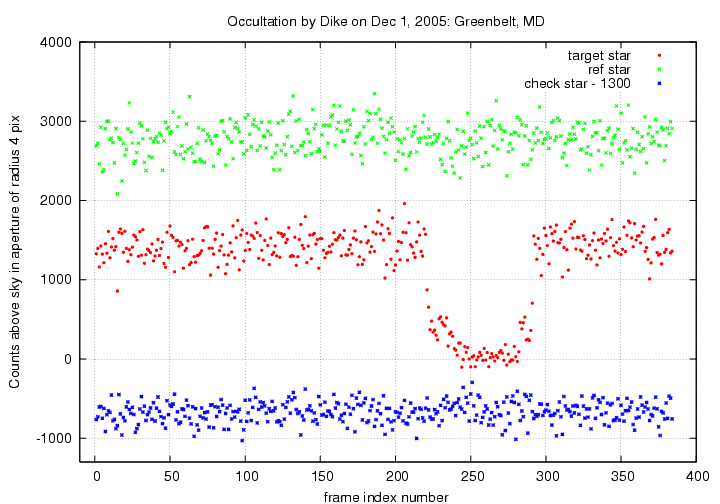
and a closeup around the occultation. Note the step in brightness, just after the main disappearance and just before the reappearance. The step has the same brightness in each case, about one-quarter of the full brightness of the unocculted star.

Now the event as seen from the intermediate location of La Plata, MD: the entire record

and a closeup around the event. No step is seen here; the star goes from full brightness to zero brightness.
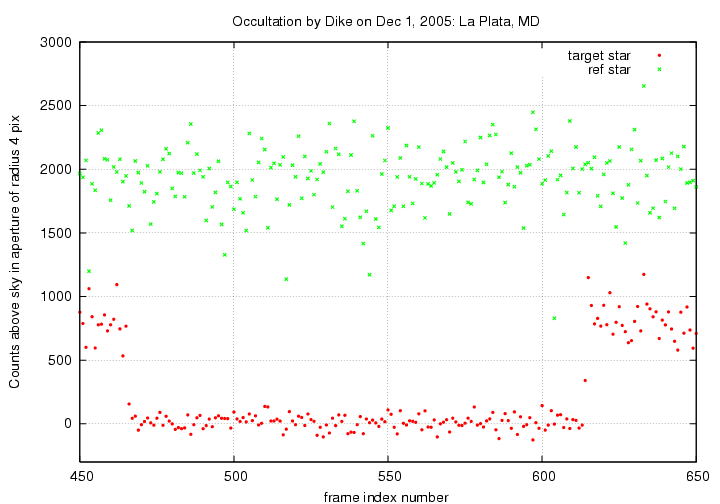
Here is the event as seen from the southernmost location of Dahlgren, VA: the entire record
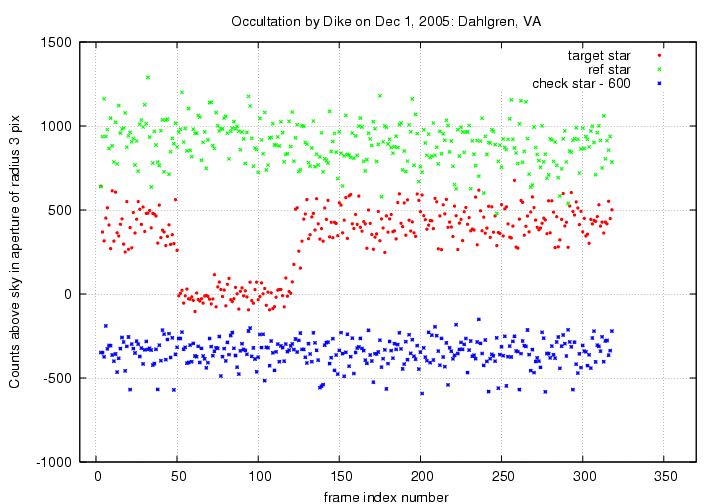
and a closeup around the event. Again, there is no evidence for a step here.
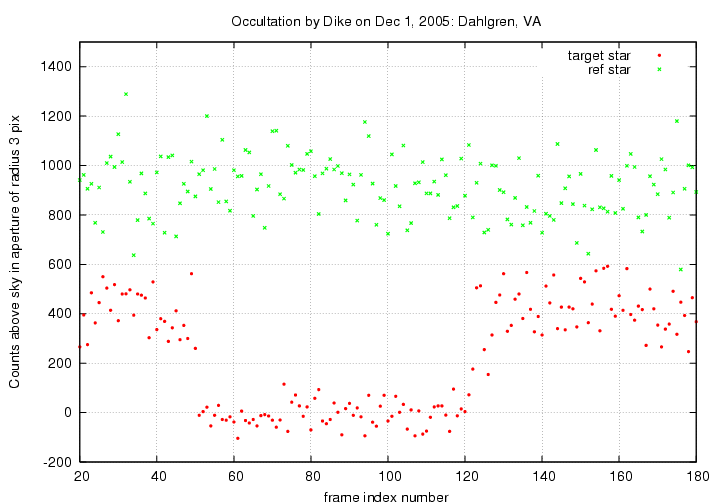
Finally, if we compare the events from all three locations, we can see that its duration was greatest at the intermediate location. This makes sense: the duration measures the length of a chord through the asteroid, and so is likely to be largest around the middle of the body.
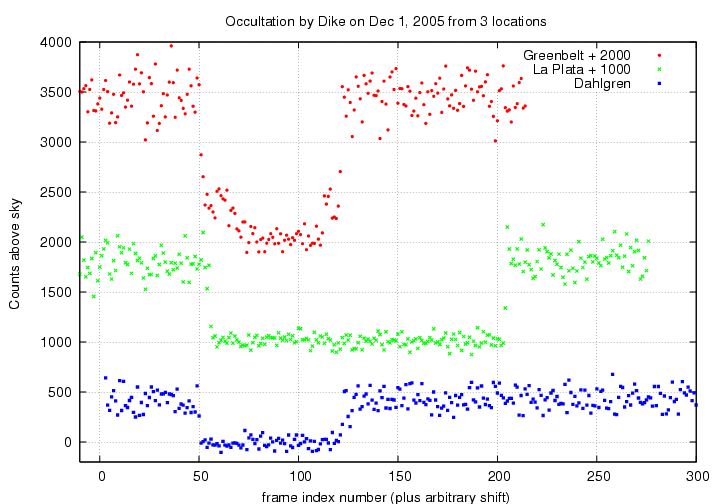
You can grab the data in multi-column ASCII text files below. The columns are
col quantity
------------------------------
1 frame index
2,3 flux of reference star in 2-pixel-radius aperture,
and estimate of uncertainty in that flux
4,5 ditto 3-pixel aperture
6,7 ditto 4-pixel aperture
8,9 flux of target star in 2-pixel-radius aperture,
and estimate of uncertainty in that flux
10,11 ditto 3-pixel aperture
12,13 ditto 4-pixel aperture
14,15 flux of check star in 2-pixel-radius aperture,
and estimate of uncertainty in that flux
16,17 ditto 3-pixel aperture
18,19 ditto 4-pixel aperture
 Copyright © Michael Richmond.
This work is licensed under a Creative Commons License.
Copyright © Michael Richmond.
This work is licensed under a Creative Commons License.